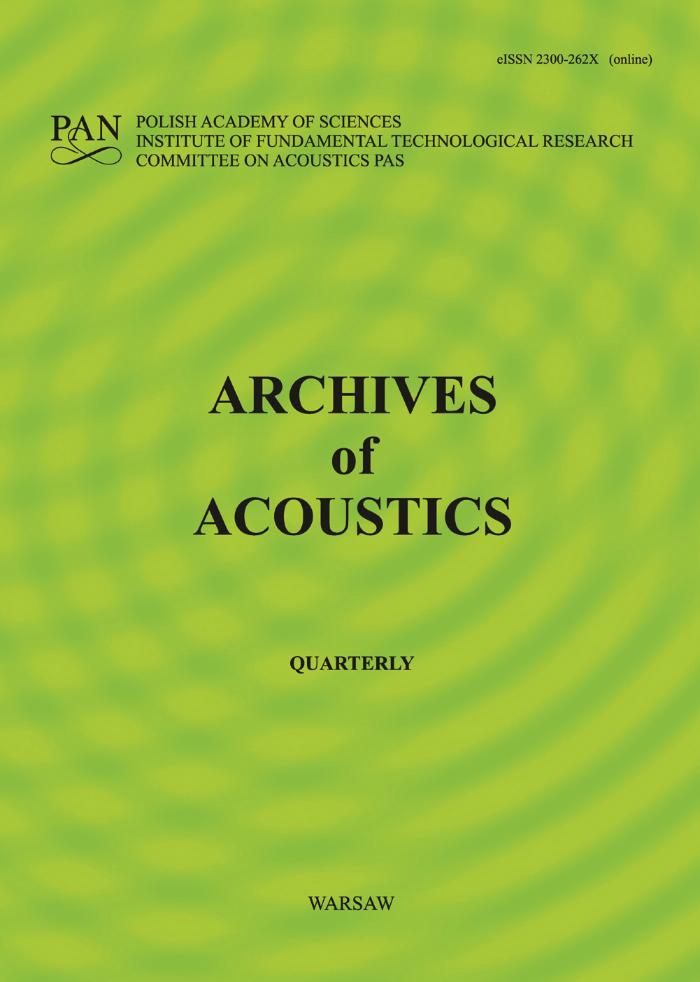Abstract
Although noise and vibration measurements are widespread in the machine diagnostics, they are not used in the diagnostics of the powertrain of motor vehicles. Our research aims to investigate the possibilities, advantages, and drawbacks of using noise and vibration diagnostics performed for motor vehicles. In this paper, we attempt to use vibroacoustic signals from a motor vehicle for diagnostic purposes. Ordinary audible malfunctions, for example, misfiring in a passenger car, were artificially created. The differences between the normal and faulty operating conditions were examined to identify evidence of failure in the vibration signal. Primarily, evaluation through Fourier transformation was performed to provide a visual correlation between the fault and the vibration behavior of the car. Detailed conclusions from the measurements and future research plans are discussed.Keywords:
vibration, acoustics, diagnostics, misfire, vehicle, analysis, internal combustion engine, malfunctionReferences
1. Babu Devasenapati S., Sugumaran V., Ramachandran K.I. (2010), Misfire identification in a four-stroke four-cylinder petrol engine using decision tree, Expert Systems with Applications, 37(3): 2150–2160, https://doi.org/10.1016/j.eswa.2009.07.061.
2. Brecher C., Gorgels C., Carl C., Brumm M. (2011), Benefit of psychoacoustic analysing methods for gear noise investigation, Gear Technology, 28(5): 49–55.
3. Cavina N., Corti E., Minelli G., Serra G. (2002), Misfire detection based on engine speed time-frequency analysis, SAE Transactions, 111: 1011–1018, http://www.jstor.org/stable/44743127.
4. Delvecchio S., Bonfiglio P., Pompoli F. (2018), Vibro-acoustic condition monitoring of internal combustion engines: A critical review of existing techniques, Mechanical Systems and Signal Processing, 99: 661–683, https://doi.org/10.1016/j.ymssp.2017.06.033.
5. Firmino J.L., Neto J.M., Oliveira A.G., Silva J.C., Mischina K.V., Rodrigues M.C. (2012), Misfire detection of an internal combustion engine based on vibration and acoustic analysis, Journal of the Brazilian Society of Mechanical Sciences and Engineering, 43: 336, https://doi.org/10.1007/s40430-021-03052-y.
6. Szabó J.Z., Domotor F. (2022), Comparative testing of vibrations in vehicles driven by electric motor and internal combustion engine (ICE), [in:] Vehicle and Automotive Engineering 4, Jarmai K., Cservenak A. [Eds.], pp. 871–879, https://doi.org/10.1007/978-3-031-15211-5_72.
7. Turney S. (2022), Skewness. Definition, examples & formula, https://www.scribbr.com/statistics/skewness/. (access: 05.01.2024).
8. Wojnar G., Czech P., Stanik Z. (2011), Use of amplitude estimates and nondimensional discriminants of vibroacoustic signal for detection of operational wear of rolling bearings, Scientific Journal of Silesian University of Technology. Series Transport, 72: 109–114.
9. Wojnar G., Madej H. (2009), Averaged wavelet power spectrum as a method of piston – Skirt clerance detection, Diagnostyka, 2(50): 93–98.
10. Wojnar G., Stanik Z. (2010), Influence of wear of bearings carriageable wheels on acoustics pressure, Scientific Journal of Silesian University of Technology. Series Transport, 66: 117–122.
2. Brecher C., Gorgels C., Carl C., Brumm M. (2011), Benefit of psychoacoustic analysing methods for gear noise investigation, Gear Technology, 28(5): 49–55.
3. Cavina N., Corti E., Minelli G., Serra G. (2002), Misfire detection based on engine speed time-frequency analysis, SAE Transactions, 111: 1011–1018, http://www.jstor.org/stable/44743127.
4. Delvecchio S., Bonfiglio P., Pompoli F. (2018), Vibro-acoustic condition monitoring of internal combustion engines: A critical review of existing techniques, Mechanical Systems and Signal Processing, 99: 661–683, https://doi.org/10.1016/j.ymssp.2017.06.033.
5. Firmino J.L., Neto J.M., Oliveira A.G., Silva J.C., Mischina K.V., Rodrigues M.C. (2012), Misfire detection of an internal combustion engine based on vibration and acoustic analysis, Journal of the Brazilian Society of Mechanical Sciences and Engineering, 43: 336, https://doi.org/10.1007/s40430-021-03052-y.
6. Szabó J.Z., Domotor F. (2022), Comparative testing of vibrations in vehicles driven by electric motor and internal combustion engine (ICE), [in:] Vehicle and Automotive Engineering 4, Jarmai K., Cservenak A. [Eds.], pp. 871–879, https://doi.org/10.1007/978-3-031-15211-5_72.
7. Turney S. (2022), Skewness. Definition, examples & formula, https://www.scribbr.com/statistics/skewness/. (access: 05.01.2024).
8. Wojnar G., Czech P., Stanik Z. (2011), Use of amplitude estimates and nondimensional discriminants of vibroacoustic signal for detection of operational wear of rolling bearings, Scientific Journal of Silesian University of Technology. Series Transport, 72: 109–114.
9. Wojnar G., Madej H. (2009), Averaged wavelet power spectrum as a method of piston – Skirt clerance detection, Diagnostyka, 2(50): 93–98.
10. Wojnar G., Stanik Z. (2010), Influence of wear of bearings carriageable wheels on acoustics pressure, Scientific Journal of Silesian University of Technology. Series Transport, 66: 117–122.







